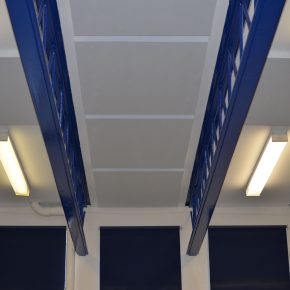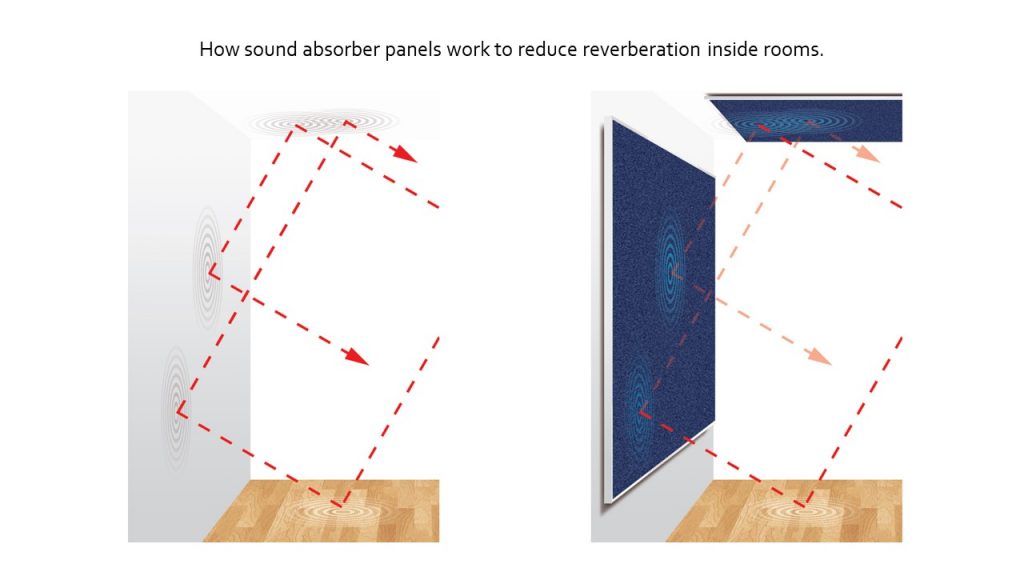
Hush: Good acoustic design to make schools autism-friendly and inclusive
School design has evolved significantly over recent decades to ensure many more children with Special Educational Needs and Disabilities (SEND) can attend mainstream schools for their education, rather than be segregated into specialist facilities. Hush Acoustics has more…
Continuous improvement in school design has been facilitated through the implementation of the latest academic and social research into how SEND pupils find their experience in schools and how they respond to their environment. This has enabled architects and interior designers to adapt their approach, inspired by a greater understanding of the needs of pupils with SEND, and the results are increasingly positive with many more of today’s schools being far more inclusive compared with previous generations.
There is, however, much more that can be done. A major reason why SEND design requirements should be at the heart of every school new build or refurbishment project lies in the data published by the Department for Education (DfE) in 2022. According to its research, nearly 1.5 million pupils in England have special education needs – that is 16.5% of the total number of English pupils – and it is possible that Scotland, Wales and Northern Ireland has a similar proportion.
So, with 1 in 6 children potentially being affected to a greater extent by their school environment, it is important to consider all aspects of the design, particularly for children who have an Autistic Spectrum Condition (ASC), also referred to as Autism Spectrum Disorder (ASD). Their needs can be particularly complex but there is now substantial research from around the world to support the view that creating the right acoustic conditions inside schools is extremely beneficial to them.
Ensuring compliance with BB93
Understanding how the classroom environment needs to be designed acoustically to make the most positive impact on the performance of children with an ASC is crucial if they are to reach their full potential and thrive. This is something recognised in Building Bulletin 93 (BB93), which sets out minimum acoustic performance standards of school buildings with guidance on how to comply with relevant sections within the Building Regulations.
It states: “Pupils with hearing impairment, autism and other special needs are often very sensitive to specific types of noise, particularly those with strong tonal, impulsive or intermittent characteristics. This should be taken into consideration in the design of areas which may be used by such children”
This guidance reflects the risk that pupils with autism can suffer as a result of sensory overload. Children with autism will often have difficulty processing everyday sensory information through sight, sound, smell, taste and touch. But one common abnormality is auditory processing, which is why the school design must consider the risk of excessive noise transferring between individual rooms, from external sources and building up inside rooms.
Acoustic design best practice
In order to create classrooms, break-out spaces, communal areas and specialist learning zones with a sense of calm and avoid the potential for the environment being an ‘assault on their senses’ that could create confusion and fear, we need to think holistically.
The design and separating walls, floors and ceilings must be effective at minimising sound transmission, and there are numerous ways to achieve this, including by applying a fully tested system to meet the construction type. Hush Acoustics offers a wide variety of acoustic control systems, details of which can be found on the website.
But one area that is often overlooked is the potential for excessive noise within rooms as a result of sound reverberation. Any design ambitions to create a school which provides a safe, pleasant and stimulating environment, well suited to supporting the curricular, social and leisure needs of pupils, can be quickly undermined, particularly for pupils with autism, because of the extent of hard materials used in internal spaces.
Sound reverberation results inside a room when there is relatively little opportunity for sound waves to be absorbed. Soft furnishings and carpets are excellent materials for absorbing sound waves, but they are often not particularly practical in school environments where durability is key in order to minimise cleaning and maintenance requirements.
Hence why hard surfaces like tiles, wooden floors and blinds have become the go-to materials for fit-outs. Unfortunately, with these types of materials, sound waves simply reflect back into a room, and this is compounded in rooms which feature wooden furniture, plastered walls and large areas of glazing.
Sound absorber panels
Best practice must, therefore, involve a clear acoustic assessment at an early stage of the design and fit-out process to forecast the potential for reverberation. The good news is that reverberation can be effectively addressed using sound absorber panels, providing a professional acoustic survey is conducted, including after the building project is complete and the school is in-use.
Sound absorber panels, including those available from Hush Acoustics, are designed to be wall or ceiling mounted. They are manufactured using a specially formulated acoustic foam which is finished with an interior fabric applied to the face, edges and back return.

Providing the coverage and positioning, as determined by the acoustic survey, are correctly followed, the reduction on reverberation made by the absorber panels will be noticed immediately. Installing them is a relatively inexpensive way to make instant improvements to the acoustic comfort inside school buildings, with virtually no disruption to teaching as fitting is straightforward and can be completed outside the school day.
To discuss how to improve the acoustic conditions inside schools to ensure the performance and achievements of all SEND pupils is optimised, contact Hush Acoustics on 0114 551 8687 or visit www.hushacoustics.co.uk.
Hush Acoustics Ltd
Unit 2, Tinsley Industrial Estate
Shepcote Way
Sheffield
South Yorkshire
S9 1TH
Tel: 0114 551 8685
Fax: 0151 944 1146
Visit Supplier's page
Latest news

29th April 2025
Senior pledges to ‘bee’ part of the solution with new biodiversity initiative
Senior Architectural Systems has installed its first on-site beehive, marking another step forward in its commitment to sustainability and biodiversity.
Posted in Articles, Building Industry News, Building Products & Structures, Building Services, Curtain Walling, Doors, Glass, Glazing, Innovations & New Products, news, Restoration & Refurbishment, Retrofit & Renovation, Sustainability & Energy Efficiency, Walls, Windows
29th April 2025
West Fraser range delivering key benefits for South-East carpentry company
An experienced carpenter and building site manager who has recently set up his own company is using high performance panel products from the West Fraser range.
Posted in Articles, Building Industry News, Building Products & Structures, Building Systems, Case Studies, Garden, Restoration & Refurbishment, Retrofit & Renovation, Sustainability & Energy Efficiency, Timber Buildings and Timber Products
29th April 2025
CPD Courses Available Online From Ecological Building Systems
Ecological Building Systems, a leading supplier of natural building products for sustainable construction, has revealed its comprehensive CPD programme for the year ahead.
Posted in Articles, Building Industry Events, Building Industry News, Building Products & Structures, Building Services, Continuing Professional Development (CPD's), Information Technology, Innovations & New Products, Insulation, Restoration & Refurbishment, Retrofit & Renovation, Seminars, Sustainability & Energy Efficiency, Training, Walls, Waste Management & Recycling
29th April 2025
WindowBASE launches new prospect databases at FIT Show
Visit WindowBASE at the FIT Show to see first-hand how it helps companies find new customers – the company is launching an easy-to-use, intuitive platform on Stand G16 at the NEC Birmingham from 29th April – 1st May.
Posted in Articles, Building Industry Events, Building Industry News, Building Products & Structures, Building Services, Doors, Exhibitions and Conferences, Glass, Glazing, Information Technology, Innovations & New Products, Posts, Publications, Research & Materials Testing, Restoration & Refurbishment, Retrofit & Renovation, Windows
 Sign up:
Sign up: